
An excerpt from the Mindfulness workshop given by Jetsunma Ahkon Lhamo in 1999
One of the things that is very unique about the Buddhadharma is that it is not a “Sunday-go-to-meeting” religion. It’s not the kind of religion where you go on Sunday and Christmas and Easter, or whatever your particular holiday happens to be, and the rest of the year you’re just where you are. Buddhism is different in that it is a path. In a way, it is a nonreligious religion. You have to think of it as a path that one walks consistently, faithfully, and deeply. There is relatively little benefit from practicing Dharma in a superficial way. Learning one or two mantras and walking around saying some prayers but not really training the mind in a deep and profound sense of the View will be a lot less effective. Also, our tendency is to become dry, and not remain moist on the path. The heart dries up. If there is no profound investment in establishing the View and establishing mindfulness, the result will be greatly weakened, greatly crippled.
Mindfulness is one of those subjects that one can take to the depths of one’s practice and its many aspects display themselves in different kinds of practice. Before I talk about the first aspect of mindfulness, let me address some difficulties we have as Westerners, particularly. Because of the very nature of our culture, there are so many different things to do, and we are inundated with philosophies and religions, both old and new. We are inundated with different kinds of experiences that people call “spiritual.” The reason I’m so mindful of this is because I lived in Sedona, Arizona, and Sedona is known for that. People mistake any kind of experience that feels deep as a “spiritual” experience, not able to discriminate between something that feels spiritual and something that is an actual commitment and movement on one’s path. There really is a difference between a mantra and a backrub! There really is a difference between the various experiences that people have that they call spiritual and an actual path that one practices consistently with the intention of benefiting beings. This lack of spiritual discrimination is the greatest problem that we have in the West. You can see how it is symbolically, even to go the grocery store. If you send your child to the grocery store to buy bread, you’ll have to specify what kind of bread, what brand of bread, because on the shelf are a million different kinds of bread. Other cultures might be a little bit different than that, especially third world cultures. There, when you go to buy bread, you buy the bread they have, and that’s pretty much it. Bread is bread. In the same way, their faith is their faith. It’s not something that one tastes and tries and then tries something else. That discrimination is sort of built into the culture. We don’t have that, so our need to practice discrimination is much stronger. We have a tremendous need for that.
Discrimination is best practiced through changing one’s habitual tendency. On the path of Buddhadharma, if you really step back from it and look at the different categories of practice, you’ll notice that, basically, the Buddhadharma is about applying the actual, exact antidote to the subtle and gross forms of suffering that we endure. The Buddha has taught us that we suffer mostly from desire and that suffering is ongoing and that it is all-pervasive. But we also notice that that desire takes many forms, so there are practices in the Buddhadharma that are meant to specifically pacify pride and ego and that ego-clinging self-cherishing. There are practices in the Dharma that are meant to apply the exact antidote to a lack of generosity, to selfishness and greediness and just wanting, wanting, wanting — that kind of suffering. There are practices in the Buddhadharma that are meant to help us shake ourselves out of the kind of slothful mental attitude that so many of us have which is a kind of sleepwalking that we do through the days and years of our lives. This is actually a quality of mind and in Buddhism it’s labeled ignorance. Ignorance is not lack of education in Buddhism; it’s lack of wisdom. For that reactive or slothful mind, where the mind doesn’t stop and evaluate and use its energy to determine whatever direction it’s going in, in the Buddhadharma there are antidotes to that as well.
In fact, when you study the Buddhadharma, you really have to think about the Buddha as being like a doctor and samsara as being like the sickness and the Dharma as the nurse that feeds the medicine to you all the time. So in this spiritual discrimination, it isn’t a theoretical, vague idea. This ideal of mindfulness, of discrimination, actually needs to be practiced in a very exacting way, for the very reason that we are in a culture that goes in exactly the opposite direction. We are in a culture that does not teach discrimination, really, in any form, particularly about spiritual issues.
How can we practice spiritual discrimination? How can we formulate that by which we can begin to grow the ability to distinguish? How can we learn to discriminate between what is truly of the mind of the Buddhas and what is ordinary and simply arising from the phenomena of samsara? What is the method by which we can actually establish the View? In the Buddhadharma, we are always looking to apply an exact antidote. You have to think about samsara as being like a poison and that there is an exact formula that is the antidote to that poison. In trying to develop discrimination and mindfulness, it is best to hold ourselves to a kind of ritual or task that is evident and visible. One of the strongest antidotes to being stuck on the idea of self-nature as being inherently real, (which is really quite different from enlightenment) and for lack of spiritual discrimination – not being able to tell, in a spiritual sense, the difference between a diamond and a piece of cut glass — is called Guru Yoga.
Guru Yoga on the Vajrayana path is extraordinarily important. It is not important because the Guru needs it nor because it’s even pleasant or fun for the Guru. It is not for any ridiculous or stupid reason like that. The reason that we practice Guru Yoga is because our minds, when they are samsaric and therefore fully engaged in the cycle of birth and death, are a little bit deadened, sort of flat-line. Just the energy or pulse of engaging in a relationship between oneself, which appears separate, and other, constantly creates a feedback loop that makes for a kind of dullness and stupor. This non-recognition of phenomena as actually being a display of our own mindstreams keeps the mind deadened to the View. In that state, it is so like us to take a spiritual minister or presenter of some kind and, because they have tremendous charisma and slick words, because they have a real routine going, we would put them in high regard and think, “Oh, this must be the Word of God,” or “This must be the Word of Spirit.” There is the inability to discriminate between that and a very deep practitioner, a silent bodhisattva (one who has not been publicly recognized). If a silent bodhisattva were to walk into the room, we wouldn’t sense that. We wouldn’t know what that was because there’s no display, no show. One of the methods that we use is this throne on which I sit, and it is not because I like it. Actually, it’s kind of uncomfortable. This throne is not here because it’s pretty, and it’s not here for any superficial reason. The Lama sits higher in order to indicate to the student the difference between this speech and the speech we hear every day. So in your mind, in the student’s mind, the throne is high, and it’s a reminder for you. This is a clear indication that in our lives we need some kind of ritual or some kind of visible habitual pattern that we engage in, in order to develop true spiritual discrimination.
© Jetsunma Ahkön Lhamo
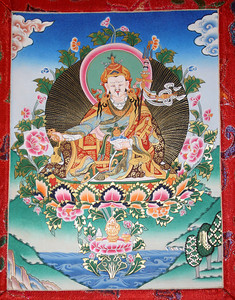
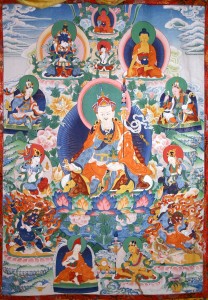

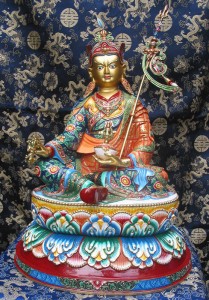
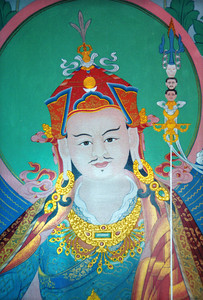
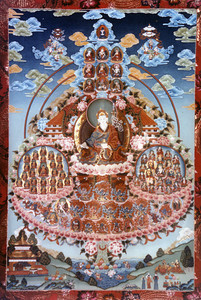

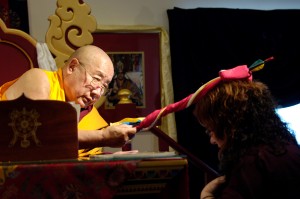
![guru-rinpoche[1]](https://www.tibetanbuddhistaltar.org/wp-content/uploads/2010/09/guru-rinpoche1.jpg)
![DSC_4465-940-glass-of-tap-water[1]](https://www.tibetanbuddhistaltar.org/wp-content/uploads/2010/09/DSC_4465-940-glass-of-tap-water1-300x225.jpg)